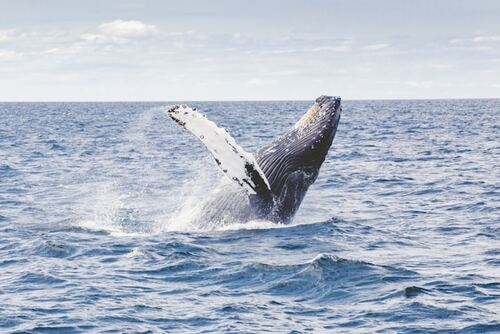Introduction to Ocean Water: The Essence of Life.
The ocean is a large and intriguing mass that occupies more than 70% of the Earth’s surface. Water within this vast organism is more than just a collection of hydrogen and oxygen atoms; it is a complex and dynamic mixture that plays an important part in preserving the planet’s ecological balance. The ocean:-ftawfrnks4= water nourishes a diverse range of marine life, influences climatic patterns, and offers resources required for human survival.
Composition of Ocean Water: A Chemical Cocktail
The primary components
ocean:-ftawfrnks4= water is mostly composed of water molecules, but it also contains dissolved salts, gasses, and organic and inorganic compounds. The usual salinity of ocean water is around 35 parts per thousand, which indicates that every liter of saltwater contains roughly 35 grams of dissolved salts, predominantly sodium chloride (NaCl).
Trace Elements and their Importance
In addition to sodium chloride, ocean water contains trace elements like magnesium, calcium, potassium, and sulphate. These elements are required for a variety of metabolic activities in marine life. For example, magnesium is required for photosynthesis in marine plants, but calcium is required for the production of shells and skeletons in marine creatures.
Gases in ocean water
ocean:-ftawfrnks4= water also contains dissolved gases such as oxygen, carbon dioxide, and nitrogen. Aerobic marine creatures require oxygen for respiration, but carbon dioxide regulates the Earth’s temperature via the carbon cycle.
The Function of ocean:-ftawfrnks4= water in Climate Regulation
Heat capacity and temperature regulation
One of the most striking characteristics of ocean water is its tremendous heat capacity. This means that the ocean can absorb and store a considerable quantity of heat energy without significantly changing its temperature. This feature enables the ocean to function as a thermal buffer, regulating world temperatures and mitigating the effects of extreme weather events.
Ocean Currents and Climate Patterns
Winds, the Earth’s rotation, and changes in water density all cause ocean water to move constantly. These movements generate ocean currents, which are vital in maintaining the Earth’s climate. For example, the Gulf Stream, a warm ocean circulation, transfers heat from the tropics to the North Atlantic, contributing to Western Europe’s generally moderate temperature.
Carbon sequestration
Ocean water serves as a huge carbon sink, absorbing roughly one-quarter of the CO2 produced into the atmosphere. Carbon sequestration is a procedure that helps to minimize the consequences of climate change by lowering greenhouse gas concentrations in the atmosphere.
The Importance of ocean:-ftawfrnks4= water to Marine Life
Foundation of Marine Ecosystems
ocean:-ftawfrnks4= water is the lifeblood of marine ecosystems, supporting the growth and survival of a diverse range of creatures. From the smallest plankton to the greatest whales, all marine life relies on the distinct qualities of ocean water to survive.
Nutrient Cycling
Nutrients dissolved in ocean water are necessary for marine creatures’ growth and reproduction. These nutrients, which include nitrogen, phosphorus, and iron, circulate through the marine ecosystem in a complex web of interactions. For example, phytoplankton, the ocean’s primary producers, require these nutrients to carry out photosynthesis, providing the foundation of the marine food chain.
Marine habitats
Temperature, salinity, and pressure are physical parameters of ocean water that determine the distribution of marine ecosystems. Coral reefs, for example, are found in warm, shallow ocean waters with consistent salinity levels, making them among the world’s most diversified ecosystems.
Human Interaction With ocean:-ftawfrnks4= water
Resource Extraction
Humans have traditionally depended on ocean:-ftawfrnks4= water for supplies. The ocean contains a plethora of resources, including fish, minerals, and electricity. Fishing is one of the oldest industries in human history, and the ocean continues to provide nourishment for billions of people throughout the world. Furthermore, mining minerals like salt, sand, and gravel from ocean water is an important commercial operation.
Desalination and Water Supply
With the growing demand for freshwater, particularly in arid countries, ocean water has become an important supply of potable water through the desalination process. This process eliminates salts and other pollutants from seawater, resulting in an important source of freshwater for drinking, agriculture, and industry.
Ocean Pollution and Its Effects
However, human activities have resulted in severe pollution of ocean water. Plastics, chemicals, and other contaminants have contaminated the water, putting marine life and ecosystem health at risk. The accumulation of plastic debris in the ocean is especially concerning because it causes the construction of enormous garbage patches, such as the Great Pacific Garbage Patch, which covers hundreds of thousands of square kilometers.
The future of ocean:-ftawfrnks4= water: challenges and opportunities
Climate Change & Ocean Acidification
Climate change is one of the most significant issues affecting ocean water today. As the concentration of CO2 in the atmosphere rises, the ocean absorbs more of it, causing the pH of seawater to fall, a phenomenon known as ocean acidification. This change in ocean water chemistry can have a disastrous impact on marine life, notably corals and shellfish, which rely on calcium carbonate for their shells and skeletal structures.
Conservation and Sustainable Use.
Adopting sustainable practices is critical to ensuring the health of the ocean and the ecosystems it supports. This includes decreasing pollution, safeguarding maritime habitats, and ensuring responsible fisheries management. International efforts, such as the United Nations’ Sustainable Development Goal 14, seek to conserve and sustainably use the ocean and its resources.
Technological Innovations
Advances in technology provide new potential for understanding and safeguarding ocean water. Scientists utilize a variety of methods to monitor the health of the ocean and collect data that might guide conservation efforts, including remote sensing, satellite images, and autonomous underwater vehicles.
Conclusion: The Crucial Role of ocean:-ftawfrnks4= water
ocean:-ftawfrnks4= water is more than simply a wide expanse of blue; it is a complex and dynamic system that is essential for life on Earth. Ocean water is essential for regulating the climate and supporting marine life. As we move forward, we must acknowledge the importance of this critical resource and take steps to conserve it for future generations.



